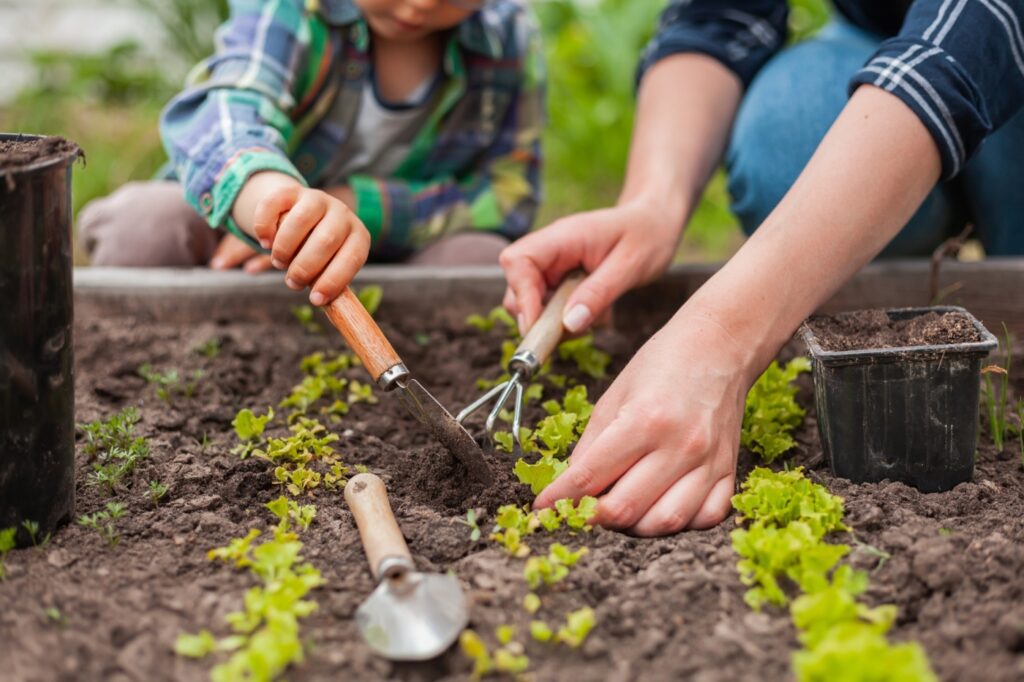
Editor’s note: Readers have missed the 5 garden tips that our late colleague Jack Christensen used to provide, and so the tips are returning courtesy of our long-running columnist Joshua Siskin.
Here are 5 things to do in the garden this week:
1. Plant your vegetable garden now. It’s desirable to build a raised bed since that will assure good soil drainage. Work your own compost into the soil or procure it at the nursery by the bag. Use a spading fork for breaking up and aerating the soil. (Note: a spading fork, not to be confused with a pitchfork, has several thick tines.) After amending, your soil should be soft and crumbly to a depth of at least six inches.
2. Prevent insect pests from infesting your vegetable garden by integrating species that attract predaceous, beneficial insects. Three families of plants are recommended in this endeavor: daisies (marigold, cosmos, Shasta daisy, marguerite daisy, chamomile, coreopsis, yarrow, and tansy, which is considered the utlimate plant where beneficial insect attraction is concerned); umbellifers (cilantro, dill, parsley, fennel); mints and sages, which belong to the same family and are represented by numerous garden worthy insect attracting species (culinary and the many ornamental sages or Salvias and a multitude of mints). Adding a shallow bowl of water here and there will further encourage beneficials to take up residence in your garden.
3. From now through June, you can fertilize your citrus trees at six-week intervals. There are fertilizers expressly formulated for citrus trees. Follow the application rate, based on the size of your tree, given on the bag. Although citrus fruit can be stored on the tree for six months or longer, and the longer it stays the sweeter it gets, a late harvest could reduce next year’s crop in taking resources away from potential new growth that would otherwise bear fruit.
4. Remove weeds before they flower so they do not produce seeds and spread. While a crop of weeds in and of itself is not a bad thing – and they make great compost – allowing weeds to flower and go to seed means you will have a lot more weeds in the future. “One year’s seeding makes seven years’ weeding” is an expression that underscores the peril of allowing weeds to form seeds. Take care not to put nutgrass, bermudagrass, field bindweed, oxalis, or other perennial weeds with persistent root systems into your compost pile since they can then proliferate throughout your garden.
5. Check your sprinklers now before the heat is upon us. As drought conditions are here once again, you may want to consider the drip irrigation option. Drip irrigation gets the job done for as little as 30% of the amount of water required when applied through conventional sprinklers, where much water is lost through wind and run-off. Conventional sprinklers also water unevenly and do not soak the root system with the efficiency of drip irrigation. Keep in mind that you can also recycle water from showers and baths, bathroom sinks, and washing machines in the irrigation of your plants by installing what is known as a gray water system. You can find contractors through the Internet who install such systems or, if you have some plumbing skills, install a gray water system yourself.
Related Articles
Former ‘Clean House’ host Mark Brunetz talks about his Scandalabra design podcast
What to know about growing rhubarb
Why this low-water fruit tree is good to grow in limited spaces
7 garden tips for growing peppers in Southern California
What to know about growing grapes and what to do when your hillside has invasive plants
